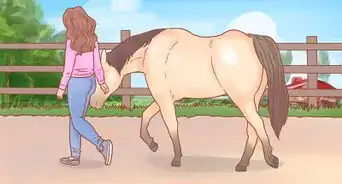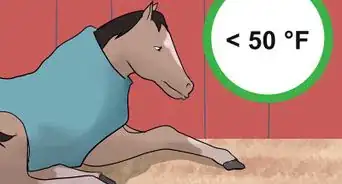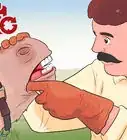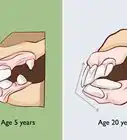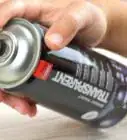This article was co-authored by Jessica Rude. Jessica Rude is an Equine Expert currently working on a cutting horse ranch in Valley View, Texas as well as a horseback riding center in Princeton, Texas. Previously, she was a Trail Guide and Wrangler at a camp and retreat center In Dallas, Texas, and an Equine Breeding Barn Manager at a reining ranch in Tioga, Texas. Jessica holds a Bachelor’s degree in Animal Science with an emphasis in Equine Science from Tarleton State University. She has studied equine nutrition, reproduction, and management. Jessica specializes in equine breeding as well as instructing horseback riding lessons, leading trail rides, recognizing equine illnesses, and administering treatments.
There are 24 references cited in this article, which can be found at the bottom of the page.
This article has been viewed 187,626 times.
Starting a horse-breeding farm isn't something to take on lightly. It takes a ton of research, planning, and hard work to run this kind of operation successfully. Just to get your farm off the ground, you will need to determine if this is the right business for you, find an appropriate location, set up your operation, and start your breeding program. However, if you think this is something you would like to do, saddle up and learn what's involved!
Steps
Finding the Right Land
-
1Talk to people in your community about what land is for sale. One of the quickest and easiest ways to find available land is to talk to people and ask them if they have heard of any farms or land for sale. Ask locals if they know of any land actively for sale or of anyone who is even thinking of selling. This may help you be the first to see something newly on the market.[1]
- If you don't live in a community with farm land, you need to find an area that does and talk to members of that community. Go to local feed stores, small businesses, and community events to find people to talk to about land that is available in the area.
-
2Hire a real estate agent that has experience with agricultural land sales. If you are not having any luck finding a piece of land on your own, hire a professional to help you. However, you need to find someone who has experience in dealing with farmland, as that is a specialized real estate niche.[2]Advertisement
-
3Focus on getting a piece of land that is large enough for your farm. This size should be determined by what you can afford but also by what your horses will need. This includes plenty of space to run and space to separate horses that shouldn't be breeding at particular times or who shouldn't be together, such as two horses that don't get along.
- Horses need approximately 1000 square feet (93 square meters) per horse, not including pasture and foraging area. More space is always better than less.
- If you want to let your horses forage for a lot of their food, you will need more like 1 acre per horse. However, most horse breeders don't have their horses forage for most of their food and a much smaller pasture is totally suitable.[3]
- You'll need at least two separated areas of land, one for the stallion(s) and the other area for the mares. If you have more than one stallion, you'll need more separate areas, as keeping two stallions in the same pasture is not a good idea in most cases, especially since farm lots rarely replicate the wide ranges of wild horses.
- Moreover, there is a need for rotating pasture, to allow pasture to recover and to release the horses onto fresh pasture regularly. This means that you will need more pasture than you might think at first.
-
4Look for land with existing buildings or locations to build new ones. It would be preferable if the land you bought already had a barn, an outdoor shed (for your horses in winter), a place to park a horse trailer, and any other necessities. If not, you'll find the costs add up very quickly on top of the land purchase.
-
5Check zoning regulations before considering buying a piece of land. You need to get a piece of land that can legally be used for a horse-breeding operation. If the land is already being used as a farm, then it’s likely that you won’t have any zoning problems yourself. However, it doesn't hurt to check the zoning just to be safe. If you want to use land for a new use, talk to local officials before committing to buying.[4]
- Getting permission to use land commercially that hasn’t been used that way in the past can be a lengthy and costly process, depending on local regulations.
-
6Ensure that you can grow some of your feed on the land. Your best bet is to buy fertile land with lots of green grass, hay, and alfalfa. Otherwise, your expenses will increase because you need to bring in lots of feed.
- If you plan on keeping horses on pasture all year round, the grass needs to be rich in vitamins and minerals and non-toxic to horses. It also needs to grow back quickly! On the other hand, if your climate means that the horses need to be kept indoors over winter, you'll need suitable barn accommodation with easy mucking out facilities and at least a small outside area for exercising during the warmest part of cold days.
- If you want most of your horse's food to come from grazing, you will need at least 1 acre of pasture land per horse.[5]
Tip: Local agricultural organizations will often test land for you to help you identify the species of grass growing on it, and any other relevant issues, such as the mineral content of the soil.
-
7Ask about the water supply before buying land. Look for a guaranteed, quality supply, where there is a plentiful and sufficient amount of clean water. Creeks, ponds, dams, and the like are good sources of water, but you'll need to ensure that algae growth isn't an issue in the warmer months. Ideally, you will have several sources, for example a pond and a well.
- It's a good idea to have the water supply tested for quality before buying land. Water will be so important to your operation that you want to know you can depend on your supply.[6]
- On the other hand, too much water can water log your land, so drainage is important. If the pasture is water logged, its feeding potential will be destroyed and there will be problems for the horses walking in puddles and muddy conditions.
Setting Up Your Farm
-
1Make a list of the duties required when running a horse-breeding farm. You will have to immerse yourself in both working directly with horses and administrative tasks, such as marketing and keeping track of all your income and expenses. In addition to making sure the horses are cared for properly, there will be a lot of time spent on assessing the background of horses and learning breeding techniques and information. Having a list of all of the jobs associated with this business will help you assess whether you are up for the challenge.[7]
- If you've owned 1 or more horses before, then you should be aware that there is a lot of work involved with caring for horses and that it's a rather expensive undertaking. Breeding horses will increase the work, the expenses, the worry, and the long-term attachment to your business in ways that simply owning a horse doesn't really prepare you for.
-
2Search the pasture and remove all sharp and dangerous objects. Prepare the pasture for horses by getting rid of rocks, barbed wire, and poisonous plants that could hurt a horse. Also, check for holes in the pasture. It would be best if there weren't any gophers or other animals that dig holes in the ground, because if a horse steps in these at a fast pace, there is a risk of severe injury. If there are holes, consider whether you can eliminate the cause of the holes, for instance if moles can be eradicated.[8]
- Areas with snakes need to be checked for snake habitats in the pasture. Snakes and horses don't mix, so by reducing the habitat preferences of snakes, you can reduce the potential for snakes hanging around. Some things that may help are not having wood/log piles, junk heaps, and any other such place that encourages rodent breeding, which attracts snakes.
-
3Identify all trees in the pasture to ensure they are not toxic. Trees are an important shade source but they can also be a liability if they produce toxic berries, seeds or leaves. Identify plants on a property using a field guide before making a purchase decision. You might be able to remove an offending tree but a whole copse of trees or a pasture filled with weeds starts to be a lot of work without a guarantee that you've found all possible toxic plants.[9]
- Trees also need protection from chewing, including removal of chewed branches to prevent infection to the trees.
-
4Build or prepare existing buildings for your horses. Equip the land and built areas like a barn, water supply, outdoor sheds (for horses in pasture), and any other necessities. If you do need to build before starting the business, get firm timelines, signed contracts, and guarantees about the costs of buildings. Most building projects inevitably cost more than initially thought.
- Orient any shelter so that it heads away from prevailing cold winds and to make the most of cooling summer breezes (usually south facing in the northern hemisphere, vice versa in the southern hemisphere).[10]
- Shelter is essential for hot, sunny days during the warmer months. A shade shed should be built in pastures lacking in shade trees. This can be as simple as a high roof on four posts or a shed with three sides; it can be made very inexpensively.
Tip: When building, get a variety of estimates rather than relying on just one builder. Also, only use registered builders affiliated with a recognized building association.
-
5Put up strong and secure fencing. The best fencing of all would be a tall, thick, and wide hedge with a wooden fence in front of it. However, as most people don't have the time to do this, a good quality wooden fence works just fine, as do metal bars. Wooden fencing comes in many styles, such as post-and-board, post-and-rail, etc. Good fencing costs money but it's not worth skimping because injuries and loss can amount to a lot more than money spent on suitable fencing from the beginning.[11]
- Using wood that is non-toxic and enduring, you should expect a good 15 to 20 years life from a well-cared for wooden fence. The trick is in maintaining it––borers can attack such fencing and bored horses like to chew it.
- Another option is electric fencing. Provided it is properly earthed and made with quality wire using at least three to four rows, it is a cost-effective and usually safe solution. Most horses will shy away from it after a few shocks. However, sometimes it can scare a horse enough to destroy the fence, so care needs to be taken with particularly wild or frisky horses.
- Do not ever use hog wire fencing for horses. Horses (and other wildlife like deer) can accidentally get their legs caught in it.
- Barbed wire should not be an option for keeping horses. Barbed wire was designed for cows, not horses. Horses can be seriously injured, perhaps permanently, if they get caught in barbed wire.
Stocking All the Necessary Supplies
-
1Stock horse tack and supplies. When starting a horse farm, you will need a variety of supplies to handle and care for your horses. To begin with, you will need grooming gear, a lead rope, and a halter for each of your horses.[12]
- Basic riding tack includes a saddle, saddle pad, girth, bridle, and reins.
- Basic grooming gear you will need includes a variety of brushes, combs, picks, and sponges.
- You will also need buckets or tubs for feed and water.
-
2Purchase tools that you will use for farm upkeep. In addition to caring for the horses, you will need to care for all of the buildings and areas on the farm. To start with, you will need equipment to clean the paddock, pasture, and any other areas in which the horses will spend their time. The bare minimum tools you will need include a spade, a shovel, and a rake if your horse is stabled.
- You may also need some larger farm equipment, such as a tractor to use in your pasture land.[13]
- Also, when replacing the bedding, you will need either a bucket for transporting the bedding or a wheelbarrow.
Tip: Invest in good quality made tools, either new or used, as good equipment works better and lasts longer, making it cheaper in the long run because it won't have to be replaced as often.
-
3Buy horse feed. Horses need a lot of food to maintain their optimal body condition. Know what your horse should be fed and get some supplies before you bring any horses to your farm. The basic components of a horses diet include:[14]
- Forage—Horses eat forage, mostly including hay, to keep warm. When buying hay, look at the quality. You want something that is nutritious but is not going to pass right through the horse. Try to get grassy hay or oat hay. If you do get alfalfa (lucerne) hay, try to get a second or, even better, a third cut, as the hay will be more stalky and will not be too rich.
- Concentrate—This is typically a mixture of chaffs, including alfalfa, oats, and wheat. The alfalfa chaff will provide high protein and calcium for your horse, and the wheat will provide a source of bulk food. This is what the horse will eat to stay full but it does not put on or take away nutrients. This is used when you want to fill a horse up faster without adding heat and energy to the food.[15]
- Supplemental foods—Pellets and grain are good ways to put on weight and maintain it. They are also handy when you require a boost of energy for a show or your horse needs a lift. Boiled grains are best as they help to put weight on and, during the colder months, help to keep the horse warm. The best thing to start with is a lucerne pellet or a cool pellet. These feeds add no additional energy and they provide a range of vitamins and minerals. After a while, you can try different products until you find the perfect fit.
-
4Order bedding for the stalls. The bedding that is most often used for horses is straw or wood shavings. While you may eventually be able to grow some of the straw you'll need on your land, you will likely need to order some to get started. This can usually be ordered from local suppliers, so ask other horse breeders in your area what service they use.[16]
- Keep in mind that the bedding should be an approved horse bedding, as some by-products of woods and timber can be toxic to horses.
-
5Make sure there is a sufficient water source set up for your horses. A large bucket will do if a horse is only stabled for a few hours. However, if stabled at night or all day, you will need to invest in a water trough or automatic waterer.[17]
Purchasing the Horses
-
1Find out which breeds are selling well in your area and beyond. Depending on what your customers want in a horse, you might consider breeding gaited horses, laid-back horses, or competitive horses. Don't simply rely on your own current knowledge. Do research into the current market. Find out who is selling good stock at the moment, which horses are renowned for which traits, the types of issues you're likely to be faced with in caring for that particular breed of horse, etc.[18]
- Doing thorough research will ensure that you're well informed and that you're making the right decision about the breed that you're choosing.
- Don't jump into breeding rare, exotic breeds unless you've had experience with them. Start with a breed you know a lot about and have spent time handling.
- If you choose a very popular horse, such as a quarter horse, you will have to compete with more breeders to sell, therefore lowering the prices. However, if your aim is to provide quality in all respects, plot this out as part of your business plan.
- Breeding racing horses requires an enormous amount of money and expertise. This kind of breeding program should only be started by someone with excellent, firsthand knowledge of the racing industry or you risk making big and costly mistakes.
-
2Talk to existing breeders about buying and breeding horses. Ask for their advice, get updates about their business, and take tours of their facilities. Visit horse sales as an observer to meet other breeders, and, while you’re there, you can get a feel for purchasing horses and how the auctions work.
- You can also go through horse farms for sale to see what is available and the prices being fetched.
-
3Research the pedigree of the specific horses you're interested in. Since a horse's lineage can affect the quality of its breeding outcomes, an in-depth knowledge of pedigrees for that certain breed is necessary. Pedigrees are basically a family tree for horses, and they should list the dam, the sire, the grand dam and grand sire, and so on.
- Reputable horse breeders will include this in the terms of sale of your new horses.
- Horse registrations and pedigrees should have an official seal or signature from a registering body, such as an organization like the American Quarter Horse Association[19]
-
4Purchase your horses. Contact the sellers of the horses you are interested in and tell them that you want to buy their horses. After that, you can negotiate about the price of each horse. However, before you buy a horse, make sure you get paperwork that confirms that it's registered, a purebred, and has good bloodlines or ancestry. This means signing papers and checking contractual clauses confirming the ancestry of each horse you purchase.[20]
- It doesn't matter which breed you're breeding, but obviously some horses will cost you more, and some horses will sell for more.
- In terms of how many horses you start with, that should be determined by your research, your land space, and your budget. Initially, it's probably best to start small with less than 10 horses and see how it goes rather than over-extending yourself only to find out you can't manage it.
Tip: If possible, buy a stallion too so that you can breed your mares for free. Beforehand, though, make sure you know how to correctly handle and care for a stallion. If you're not yet ready to own a stallion, that's fine and it's good to recognize your limitations.
Starting Your Breeding Program
-
1Gain experience and knowledge of how to work with horses. It is extremely important that you know how to properly handle, care for, and understand horses. And, just in case you're a bit green with horses, before starting a breeding program you should know:
- How to lead a horse
- How to care for a horse
- How to tell if a horse is sick
- How to tack up a horse
- How to groom a horse
- How to prepare for the arrival of a horse
-
2Acclimate your new horses to the farm. When a new horse comes to an unfamiliar surrounding, it is best to leave it alone for at least a couple of days until it settles in. To help the process along, make up a yummy, appetizing treat to ease the transition. This could be a basic chaff and grain mix, or you could go all out and make something original, such as a sweet feed mix.
- Remember, your new horses are in an unfamiliar surrounding and everything is new and different. The water will taste different and the food will smell different, so let them adjust and have the food there just in case they are hungry.
- Find out what the horse was fed before you bought it. Horses' diets need to be adjusted over a period of several days or more depending on how much it'll be changed. Sudden changes can bring about gas, diarrhea and more serious complications.
Tip: Sort out an appropriate feeding regime before bringing your new horses to the farm. Base the regime initially on what the horses have been used to and then gradually shift them to your preferred diet for the horses (if necessary).
-
3Give your horses proper daily care. Supply food and water to your horses and clean their stalls and bodies daily. Ride them often and keep them in good physical shape. Start training early and make sure they respond well to a wide variety of people.
- Be careful not to get your horses too hot and sweaty when riding in winter. Your horse could very easily become sick or get a chill. If you'd like to ride in the wintertime, consider investing in a heated indoor arena. These are also nice places to ride untrained horses, give lessons to children, and ride a horse at a canter for the first time because if you fall you'll only land on sawdust and your horse won't be able to run off.
-
4Do a safety check on all buildings and areas. For example, keep a regular eye out for insect damage on wooden surfaces. It’s especially important to inspect fencing and replace it regularly, so that your horses don’t get loose.[21]
- If you plan on keeping your new horse in a stable either at night, most of the day or even for an hour or two, you'll need to make sure it is safe.
-
5Choose a stud with a good pedigree, good achievements, and good ability, if necessary. Research studs in your area and pick one to use for your breeding if you have not bought one of your own. Take into account the cost of renting specific studs, as really great studs can cost a lot to use. However, remember that people like purebreds a lot, so make sure your stallion is purebred.[22]
- Seek out and accept advice from current horse breeders who have an excellent reputation with other horse breeders about what studs to use. Check with your local horse association for more information. Most breeders will be happy to share information, as they're as keen as you to maintain high quality standards and to see more healthy horses.
- Breed your mare to a stallion that's similar in size. It's been known that if you breed, for example, a very short mare to a very tall stallion the foal may have deformed lungs, legs, and so forth, and may have to be put down. However, if you breed two horses that look very much alike, you should get foals with no deformities.
- You can also look into artificially inseminating your breed mares. You don't have to have a stallion or transport one to cover your mares.
-
6Start breeding your mares when they go into heat. Breeding to a stallion can only start once your mares are in heat. A good way to tell if a mare is in heat is to put her in a padded stall with a 'teaser' stallion in the padded stall next to her. If the mare moves her tail to one side and sidles her rump towards the stallion, that means she's probably in heat. However, if she starts lashing out at the stallion, that means she probably is not in heat.[23]
-
7Do imprint training on all of your new foals. It is critical that you acquaint the foal with humans right after birth, as this will make the horse easier to train. As it’s being delivered, you should handle the foal, toweling it dry and lightly massaging its body. This immediate interaction will introduce the horse to positive interactions with humans and will shape its ability to be trained successfully.[24]
- A well-trained horse is more valuable and will likely be friendlier and easier to work with.
-
8Continue breeding, training, riding, and selling your horses. It’s important to keep active with all parts of the business. This will ensure that you will constantly have a stock of well-bred and trained horses.
- Always care for horses well and be kind. Both horses and the customers can sense a confident, kindly, and approachable breeder.
Marketing Your Horse Breeding Business
-
1Name your horse farm. Pick a name that describes what your business is and that is also memorable. Make it something creative or unique yet keep it sophisticated if possible.
- For example, if you have a pleasant last name, you could use your last name and the words “horse breeding.”
-
2Make a website for your horse farm. Now that you're running a business, remember that a quality, professional-looking website can bring in more customers. Thus, consider hiring a professional web designer and pay for quality web hosting. A quality website will make a good impression, something that will set you apart from breeders who can't be bothered spending time on their online presence.
- There are quite a few free web-hosting companies, so you can just use one of those if you don't want to pay a fee.
- People expect to find all the information they're looking for in an easy-to-read and professional website, so give them what they're looking for.
Tip: Include a list of all of the prizes and accolades you have won right on the home page of your website where customers can see the information. Don't hide behind modesty, as customers want to know your horses are prize winners.
-
3Promote your business. You should be setting aside some of your budget to advertise your existence, your specialization and your availability as a horse breeder/boarder/trainer. Use Google ads and Facebook ads for online reach. Advertise in relevant horse interest and horse association/club magazines.
- Ensure that there is a decent sign advertising your business at the front gate.
- Use every media opportunity in the local press that comes your way!
- If you like writing and photography, and have the time, maintaining a blog about your horse farm can be a great promotion. You can include horse breeding advice, glimpses of your daily activities, and tips for caring for horses. This can be an excellent form of outreach that will gain interested followers who might just turn into customers now and then.
-
4Follow your business plan. Keep to the plan when purchasing, breeding, caring for, and selling your horses. This will help ensure that you are on track to build a solid, good reputation as a reliable and trusted breeder.
-
5Focus on providing excellent customer service. In business, provided that you are focused, aware of your competitors' moves, and consistent in producing quality outcomes, it’s important to provide a better service than other people in the same business. Even if your prices are a bit higher or your process takes longer, quality customers will be drawn to a quality business.
-
6Enjoy the journey of running your own business. Breeding horses is hard work but it's rewarding, especially if your life is dedicated to horses. You will find yourself emotionally attached to the horses, to what happens to them, and to the business as a whole. Most of all, provided you run a tight budget and keep within your means, you will hopefully find it is a healthy and financially rewarding business as well.[25]
- You might not make millions but if you're doing what you love and making ends meet plus a little more, breeding horses can be a satisfying career.
- As your expertise grows, you can use this expertise to teach, write, advise, etc. as well as breeding the horses.
-
7Start showing your horses to get word out about your business. Getting involved in showing your horses will provide a ton of advertisement for your business. Also, the prizes or awards are a vital part of promoting the worth of your horses.[26]
- Showing of horses is a vast topic in itself, so do lots of research, both online and by talking to others who show horses.
Community Q&A
-
QuestionAre there any college degrees or schooling that would behoove a potential breeder to obtain?
 Community AnswerVeterinary Medicine with an Equestrian focus would come in handy, as well as financial and business degrees.
Community AnswerVeterinary Medicine with an Equestrian focus would come in handy, as well as financial and business degrees. -
QuestionHow any men will I need to run my small horse farm
 Community Answerit can vary with the number of horses you have on the farm. and how difficult they are to handle. For example, a good groom should be able to handle doing a yard of nine horses. if not then several grooms are advised.
Community Answerit can vary with the number of horses you have on the farm. and how difficult they are to handle. For example, a good groom should be able to handle doing a yard of nine horses. if not then several grooms are advised. -
QuestionI just had to put my horse down. It is near the house and I have no way to move it. What should I do?
 Community AnswerIf you had a vet do it you could ask them to take care of your horse. There may be pet crematories in your area.
Community AnswerIf you had a vet do it you could ask them to take care of your horse. There may be pet crematories in your area.
Warnings
- Adequate equipment, supplies, and tack will cost you a lot of money. However, when starting up you may be able to make use of sales, discounts from belonging to professional organizations, and used items bought through auctions and other sales, so your costs may be able to be controlled a bit.⧼thumbs_response⧽
- You won't necessarily see a good return for your spending for several years, meaning that you'll have to run a tight business and make do for a while.⧼thumbs_response⧽
- Always be careful when handling horses, especially stallions. When near horses, always have on a riding helmet and riding boots. Remember that even if your horse loves you and would never deliberately try to injure you, you need to use the same safety precautions as you would with a strange horse.⧼thumbs_response⧽
References
- ↑ https://www.farmlandinfo.org/special-collections/4499
- ↑ https://www.nar.realtor/agricultural/farm-land#section-165793
- ↑ https://articles.extension.org/pages/33886/how-much-land-do-i-need-for-a-horse
- ↑ http://extension.umd.edu/sites/extension.umd.edu/files/_docs/programs/newfarmer/Guidebook/Zoning%20Tutorial%20for%20New%20Farming%20Enterprises.pdf
- ↑ https://articles.extension.org/pages/33886/how-much-land-do-i-need-for-a-horse
- ↑ http://agriculture.vic.gov.au/agriculture/farm-management/soil-and-water/water/farm-water-solutions/technical-resources/managing-farm-water-supplies-in-drought
- ↑ https://practicalhorsemanmag.com/health-archive/breedingbusiness_122004-11335
- ↑ https://thehorse.com/136723/pasture-management-101-starting-a-new-pasture-from-scratch/
- ↑ http://www.drsfostersmith.com/pic/article.cfm?aid=1784
- ↑ https://extension.psu.edu/horse-stable-ventilation
- ↑ https://equusmagazine.com/management/choose-the-right-fence
- ↑ https://animals.mom.me/tack-absolutely-need-ride-horse-10552.html
- ↑ https://www.hobbyfarms.com/names-of-farm-equipment-4/
- ↑ https://esc.rutgers.edu/fact_sheet/the-basics-of-equine-nutrition/
- ↑ http://www.horsehage.co.uk/feedchafftohorses.html
- ↑ https://stablemanagement.com/articles/choosing-the-right-bedding-4026
- ↑ https://thehorse.com/149143/your-horses-water-sources-things-to-consider/
- ↑ https://www.equisearch.com/articles/righthorse-19985
- ↑ https://thehorse.com/14411/reading-pedigrees/
- ↑ https://esc.rutgers.edu/fact_sheet/tips-on-buying-your-first-horse/
- ↑ https://esc.rutgers.edu/fact_sheet/safety-recommendations-for-the-stable-barn-yard-and-horselivestock-structures/
- ↑ https://www.usshba.org/blog/choosing-a-stallion-for-your-mare
- ↑ http://csu-cvmbs.colostate.edu/academics/bms/equine-reproduction-laboratory/Pages/Learn-Breeding-Mares.aspx
- ↑ https://thehorse.com/14555/foal-imprinting/
- ↑ https://practicalhorsemanmag.com/health-archive/breedingbusiness_122004-11335
- ↑ https://www.horseandhound.co.uk/features/showing-advice-for-beginners-543744



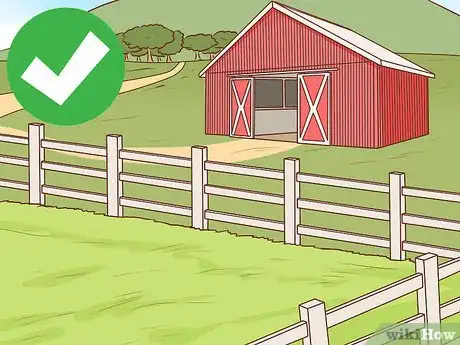
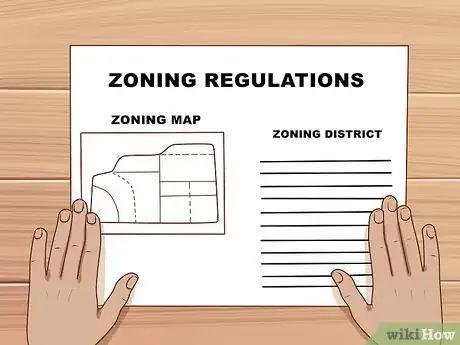
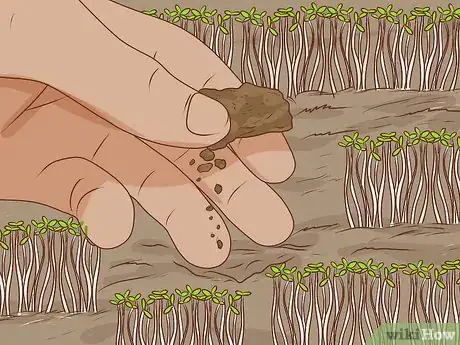


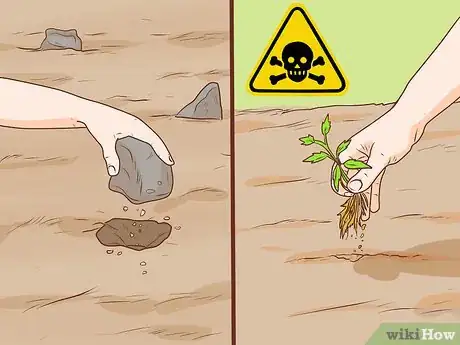
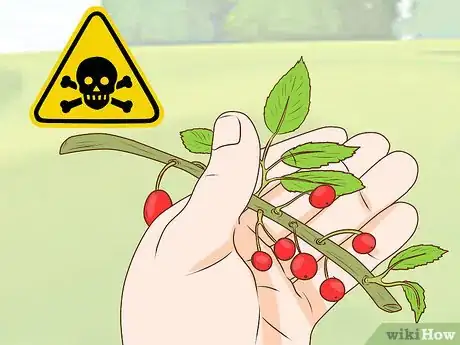
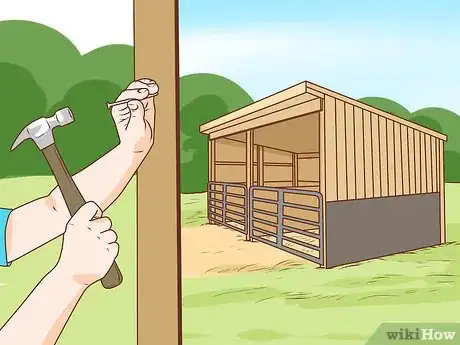
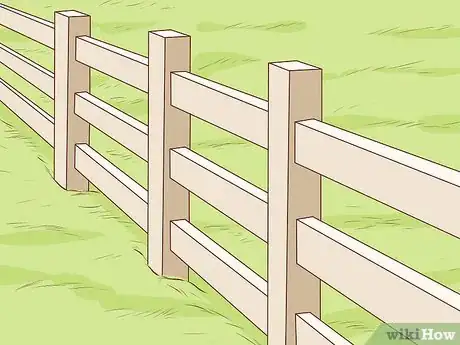

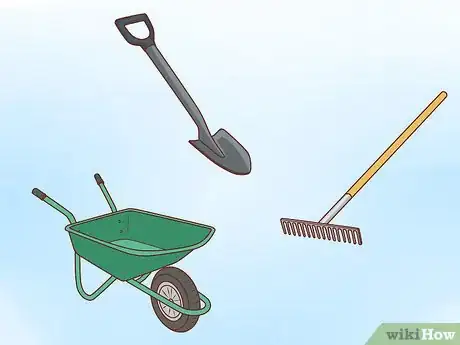
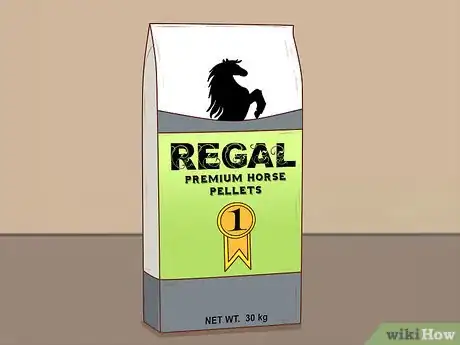
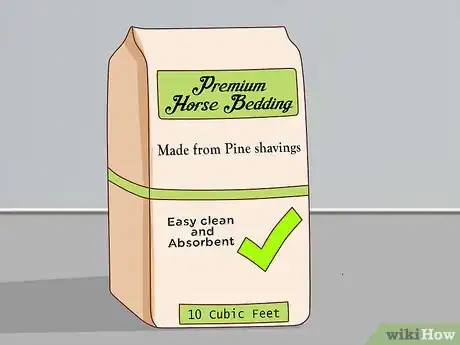
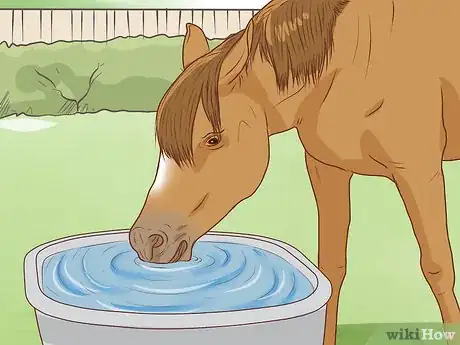
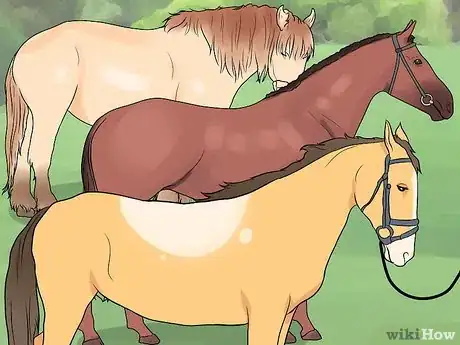
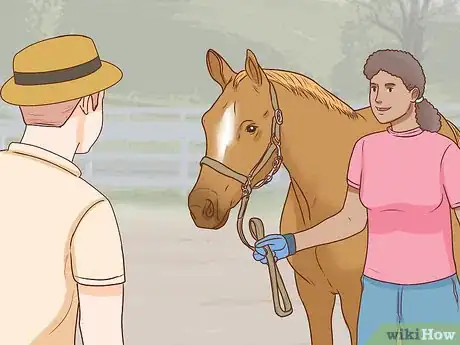

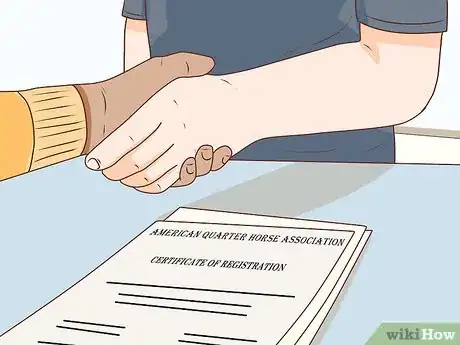
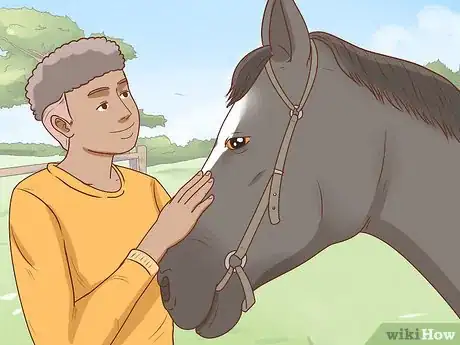
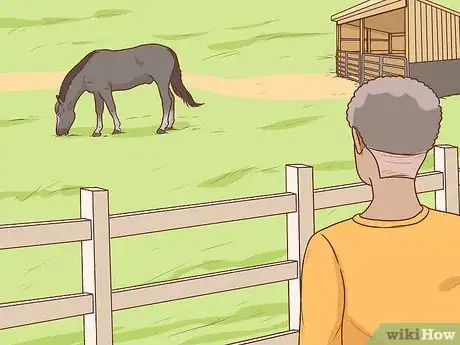
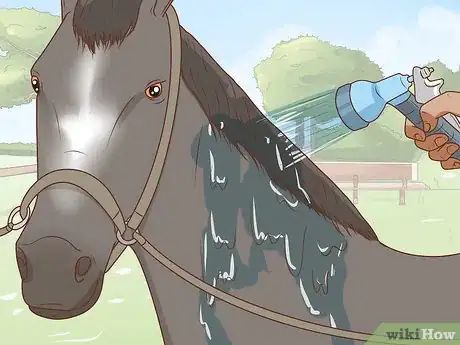

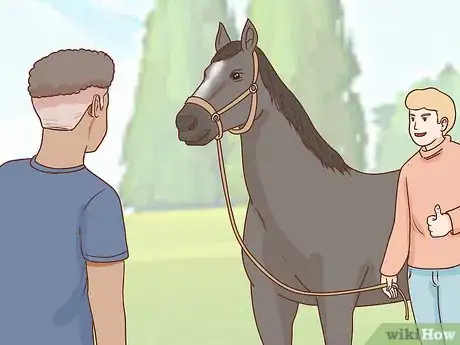
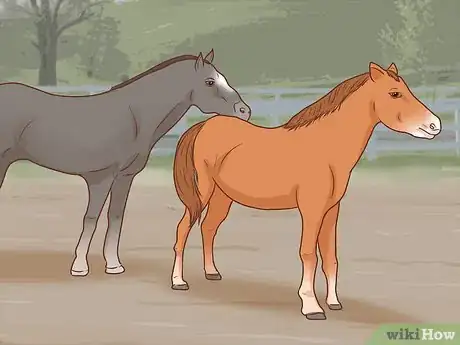
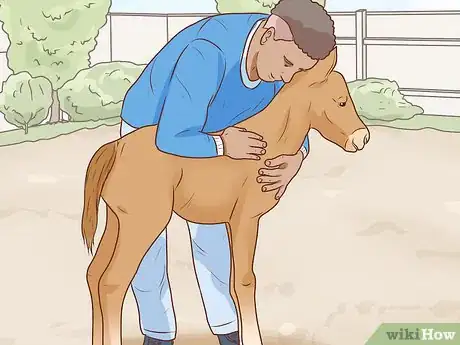
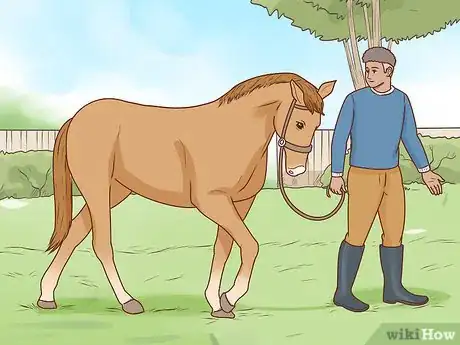
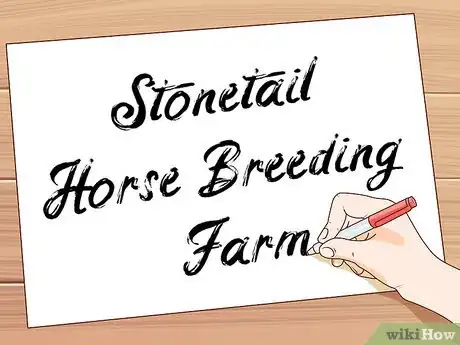

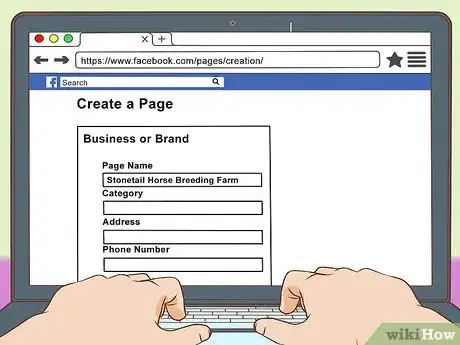
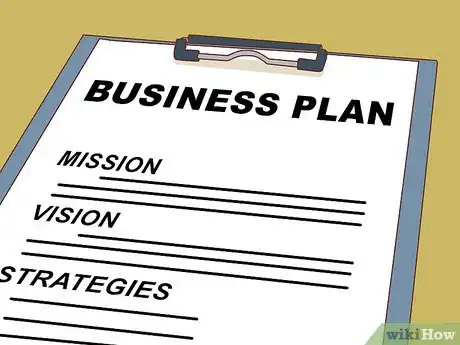

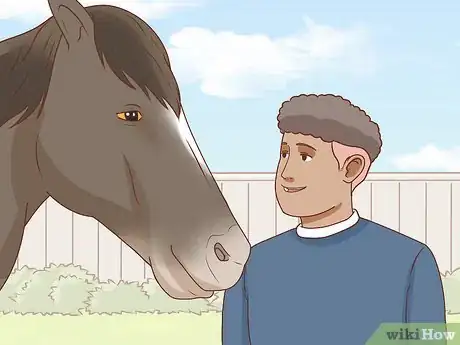
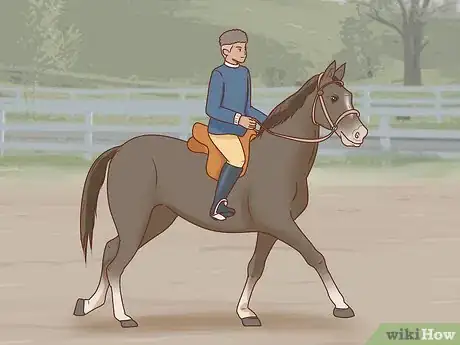



-in-Horses-Step-4-Version-2.webp)
